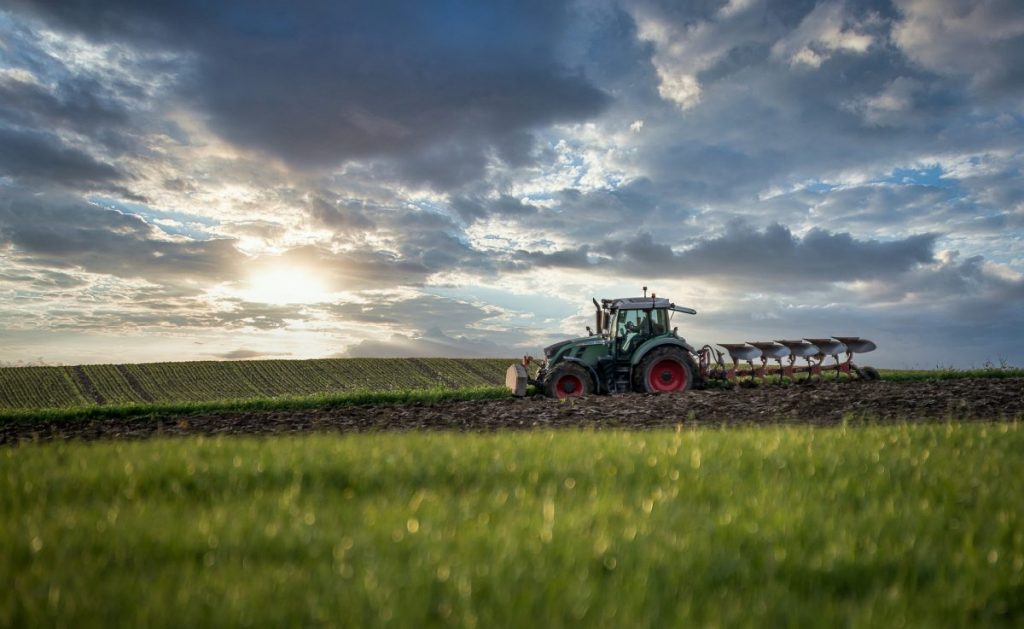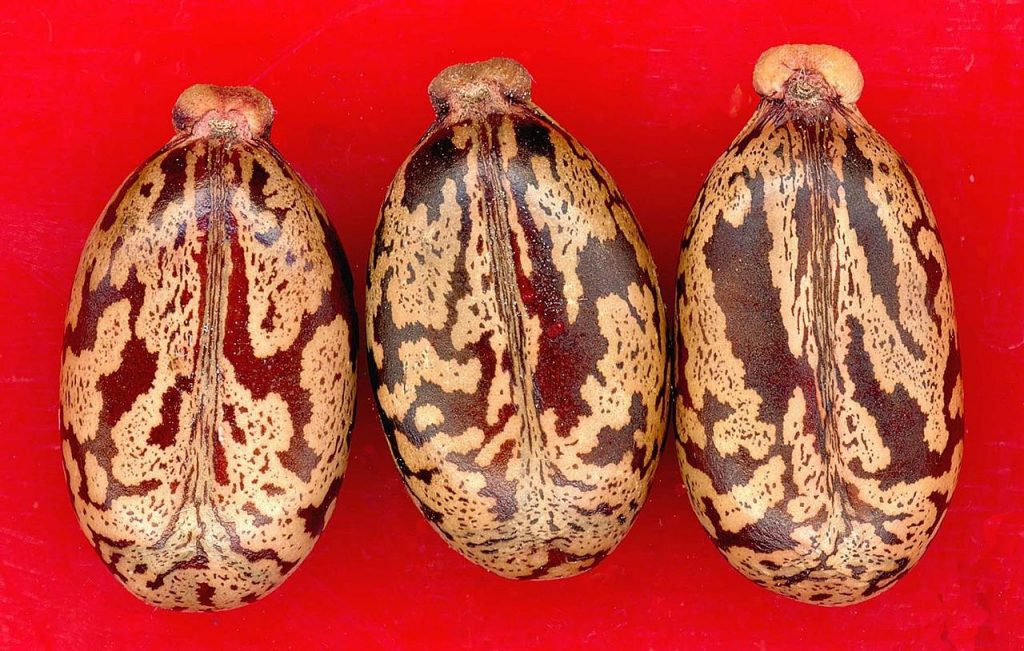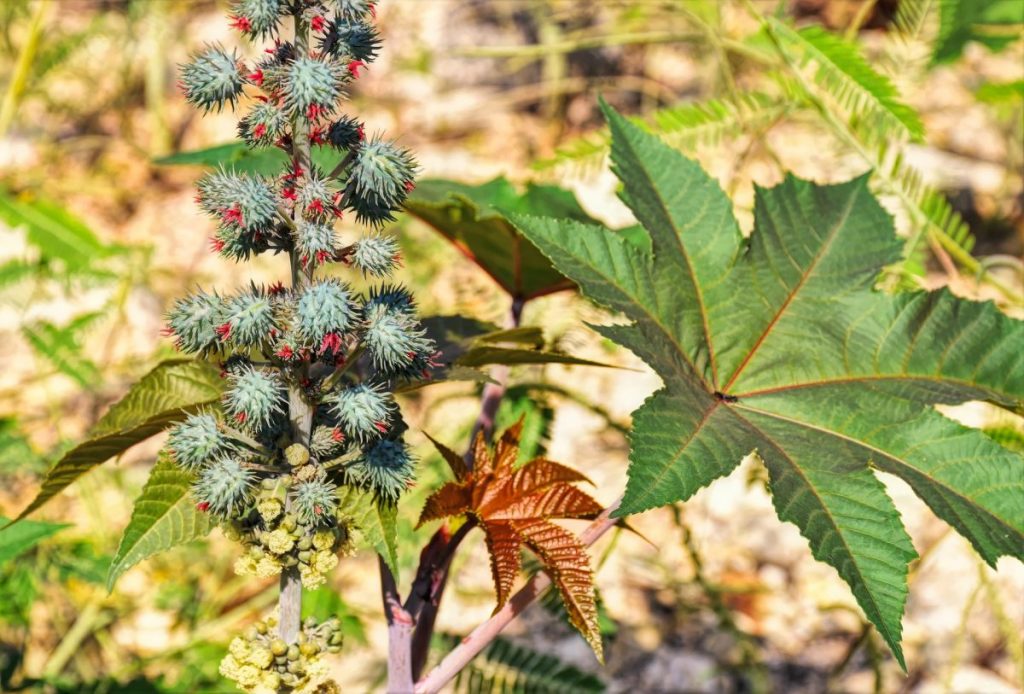Castor oil plant, cultivation and harvesting technology
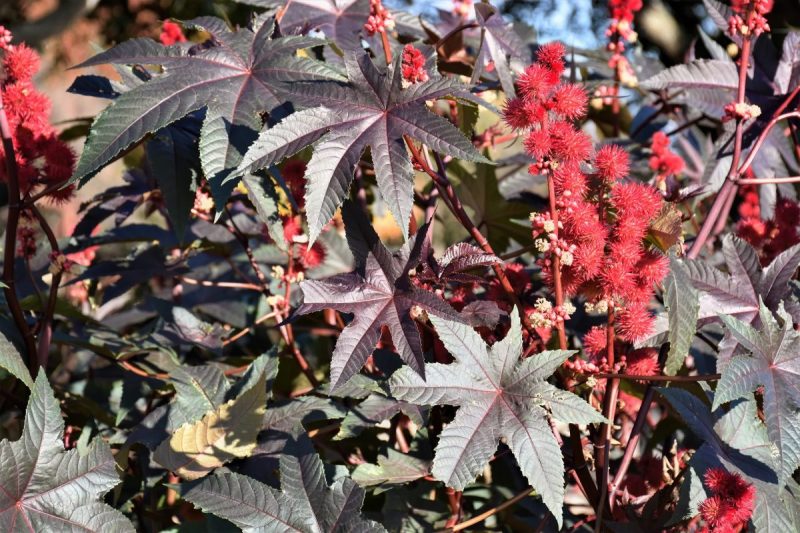
Castor oil plant or castor bean (Ricinus communis) – is a perennial plant, native to tropical and subtropical areas, and is part of the Euphorbiaceae family. In temperate climates, castor bean is cultivated as an annual plant.
Castor bean is cultivated mainly for its oil-rich seeds. Castor oil is used in the leather, paint, textile and pharmaceutical industry, in the production of synthetic rubber, in cosmetics, etc.
After processing the straws, they can be used for animal feed. The leaves are used as food for growing Eri silkworms (Philosamia ricini). The stems are used for the manufacture of paper, chipboard or textile fibers. At the same time, castor bean is also a good melliferous and ornamental plant.
Botanical characteristics
The castor oil plant has a branched taproot, which can penetrate the soil to a depth of 1.5-3 m. The root has a continuous growth until the appearance of the primary inflorescence.
The stem is straight, branched, consisting of 6-12 internodes below the first inflorescence. From the stem buds below the main raceme, 2-3 primary branches are formed, with 4-7 internodes. From these ramifications, the secondary ramifications are formed, which in turn form the tertiary racemes. The branching capacity is influenced by the crop density.
The leaves are palmately lobed, petiolate, glabrous, alternatively arranged on the stem. The inflorescence is a compound raceme. Castor bean is a monoecious plant (the female flowers are arranged at the top of the inflorescence, and the male flowers at the base). The flowering period is 3-5 weeks, and pollination is anemophilous and entomophilous.
The fruit is a capsule containing 3 seeds, globose, dehiscent or indehiscent, with or without spikes. The seeds are ovoid, large and have an oil content of approx. 50-60%, and in their core 58-75%.
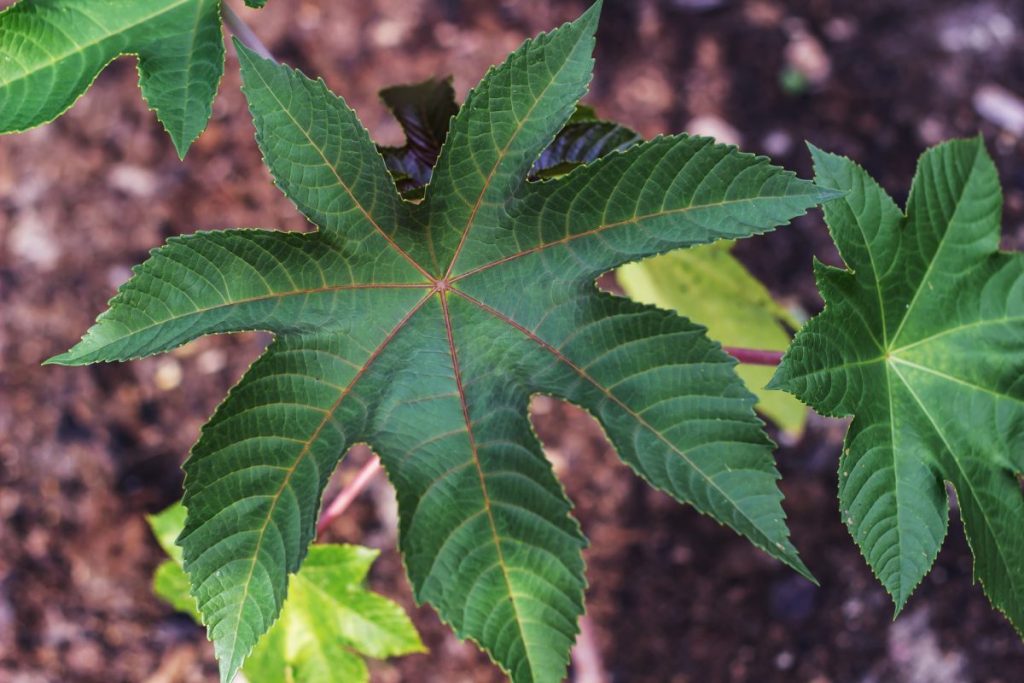
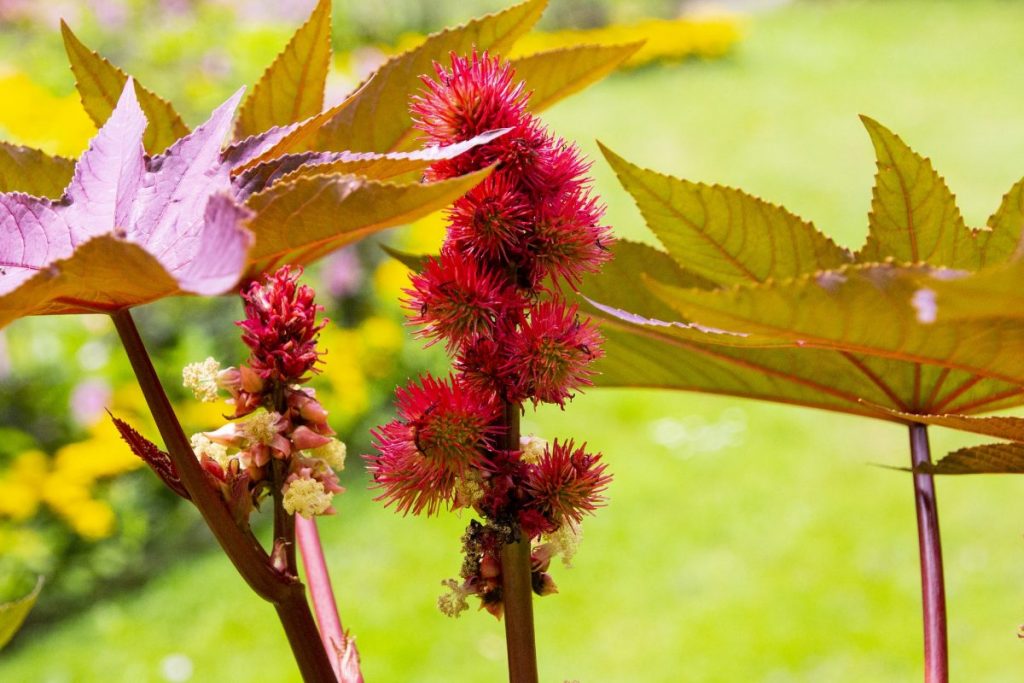
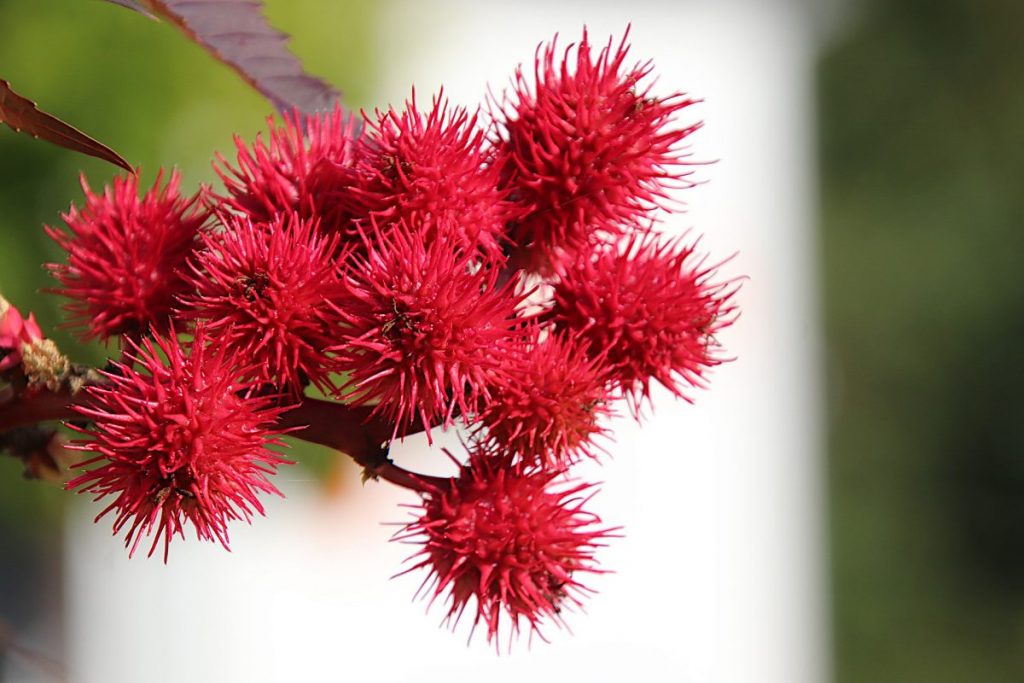
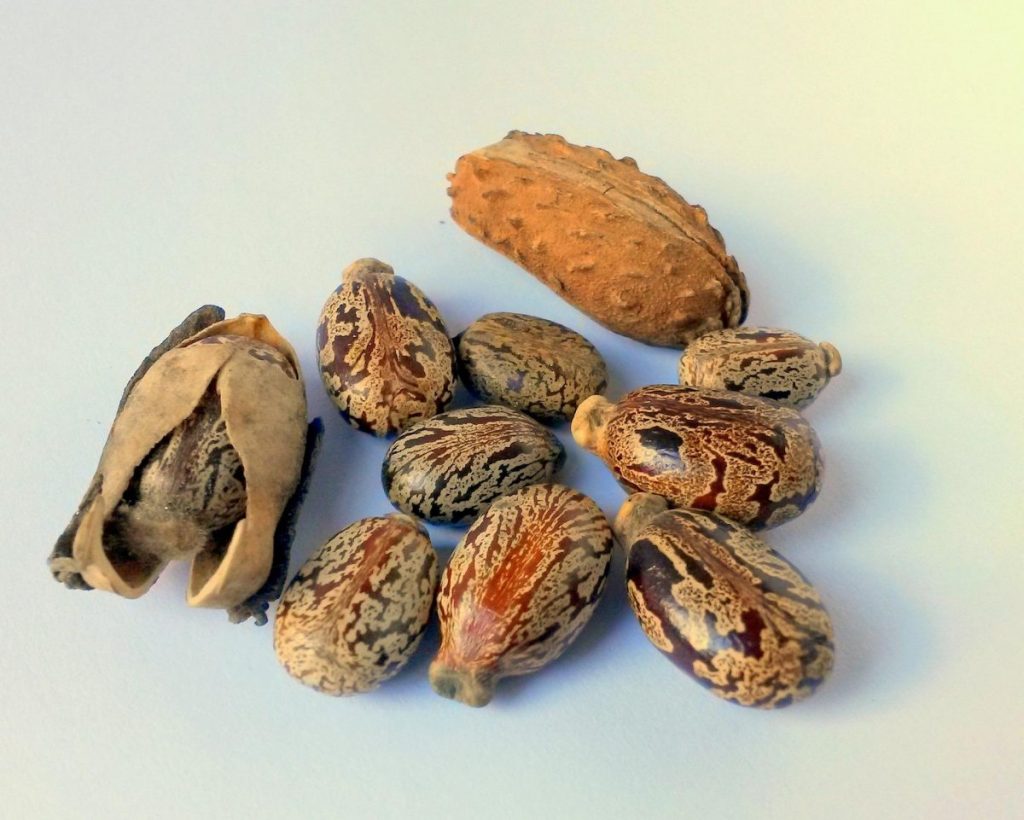
CLIMATE AND SOIL REQUIREMENTS
Temperature
The castor oil plant has high heat requirements, preferring areas where the average temperature is 20 ℃, in June and 23 ℃, in July-August. The minimum germination temperature is 10-11 ℃, and in the field 12-13℃.
Humidity
It has high humidity requirements, needing 200-300 mm of rainfall, evenly distributed, during the vegetative growth period. In dry areas, irrigation is required.
Soil
It prefers fertile, permeable soils with a pH of 6-7.5. Cultivation on heavy, sandy or salty soils is not recommended.
CULTIVATION TECHNOLOGY
Crop rotation
Forage crops fertilized with manure (maize, sugar beet) and straw cereals are recommended as precursor plants. We do not recommend monoculture or cultivation after big water-consuming plants: sunflower, sorghum, Sudan grass.
Fertilizing
The castor bean reacts favorably to the application of fertilizers. The doses are established following agrochemical analysis of the soil, depending on the expected harvest and the requirements of the plants in certain phases of vegetative growth. Nitrogen fertilizers are applied when preparing the seedbed, and those with phosphorus and potassium are applied under the basic plowing. Regarding organic fertilizers, it is recommended that manure be applied to the precursor crop.
Soil works
Basic plowing is carried out immediately after the preceding crop is removed from the land, at a depth of 25-30 cm. The land will be kept shredded, levelled and clean of weeds until the beginning of winter.
In the spring, the seedbed will be prepared with the help of the combinator, at the depth where the seeds are incorporated.
Seeds and sowing
The seeds must have a minimum purity of 97% and a germination capacity of at least 85%. The optimal period for sowing is when, in the soil, at a depth of 10 cm, in the morning, the temperature is 10 ℃ and it is maintained like this for 2-3 consecutive days.
The sowing distance is 70 cm between rows, and the depth is 6-7 cm in conditions of a good water supply of the soil and 8-10 cm in drier springs.
Weed control
It is done by manual or mechanical weeding or by using approved herbicides for the castor bean crop. The crops in which no herbicide is applied are cleaned of weeds through 2 mechanical hoeings, followed by 2 manual hoeings.
Controlling diseases and pests
The main diseases that can appear in the castor bean crop are: fusarium wilt and gray rot. The appearance of fusarium wilt can be avoided by following the rotation of 4-5 years and by seed treatments.
Among the pests, the most frequent are: wireworms, caterpillars, carabus larvae.
Irrigation
The castor bean crop is irrigated in dry years, during the formation of the inflorescence and of the seeds, when the soil humidity must be 70% of the field’s water capacity.
As for the time period, the last watering must not exceed August 1st and is only applied if dry weather is predicted and the water reserve has decreased.
Harvesting
It is done at full maturity, when the capsules turn brown, and the humidity of the seeds is 13-15%. In the case of varieties with staggered raceme maturation, harvesting is done in stages, since only the mature racemes are harvested.
Harvesting in stages is done manually. The capsules are left to dry, in the sun, for 2-3 days, then they are ground with a specially adapted threshing machine so as not to break the seeds. Mechanized harvesting is done with the help of a combine.














































































































































































































































































































































































































































